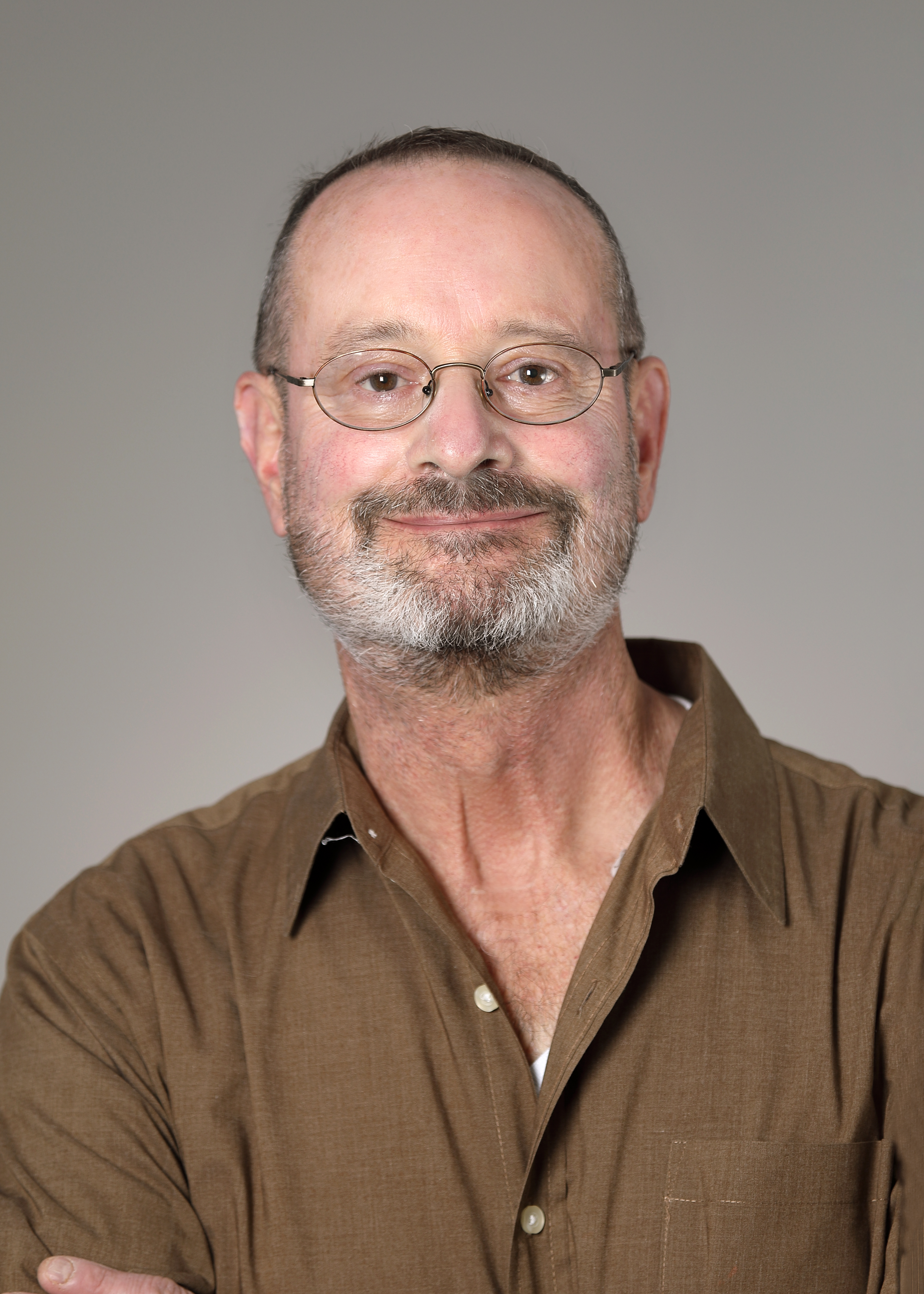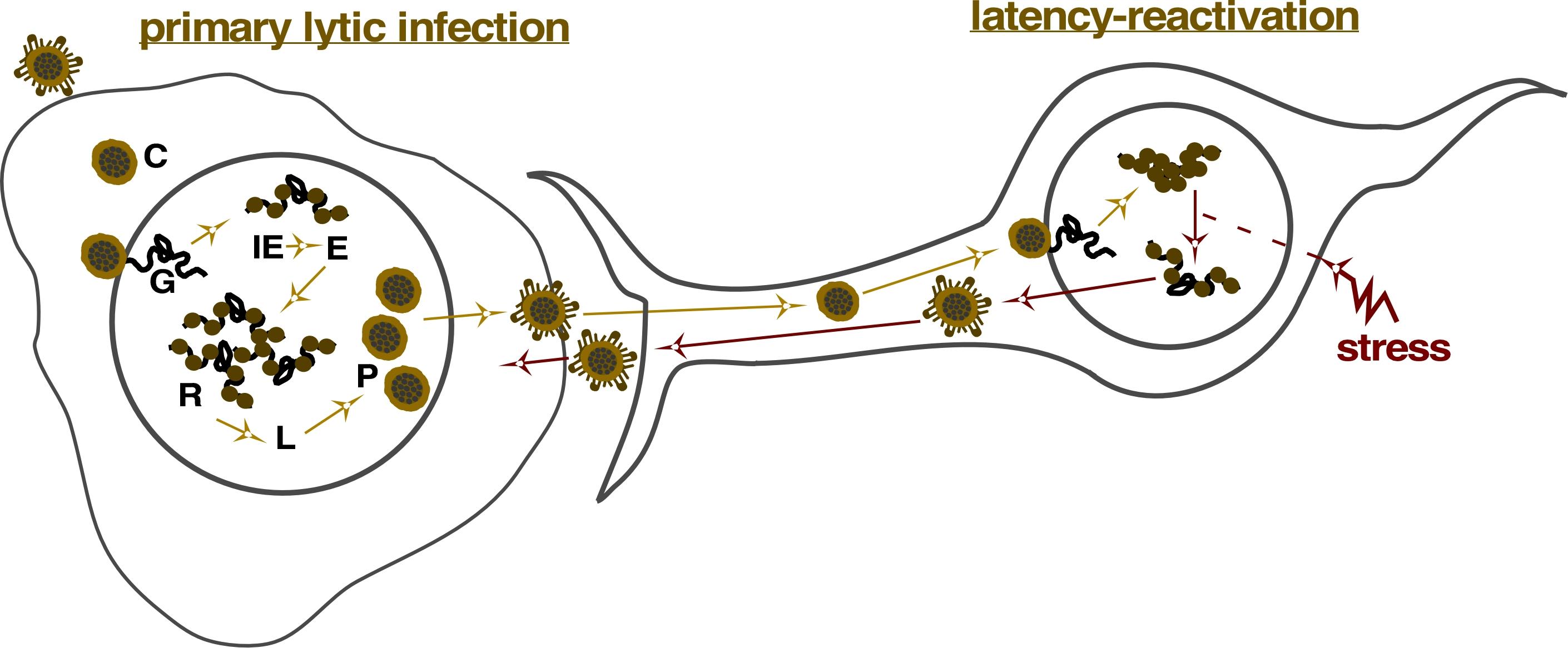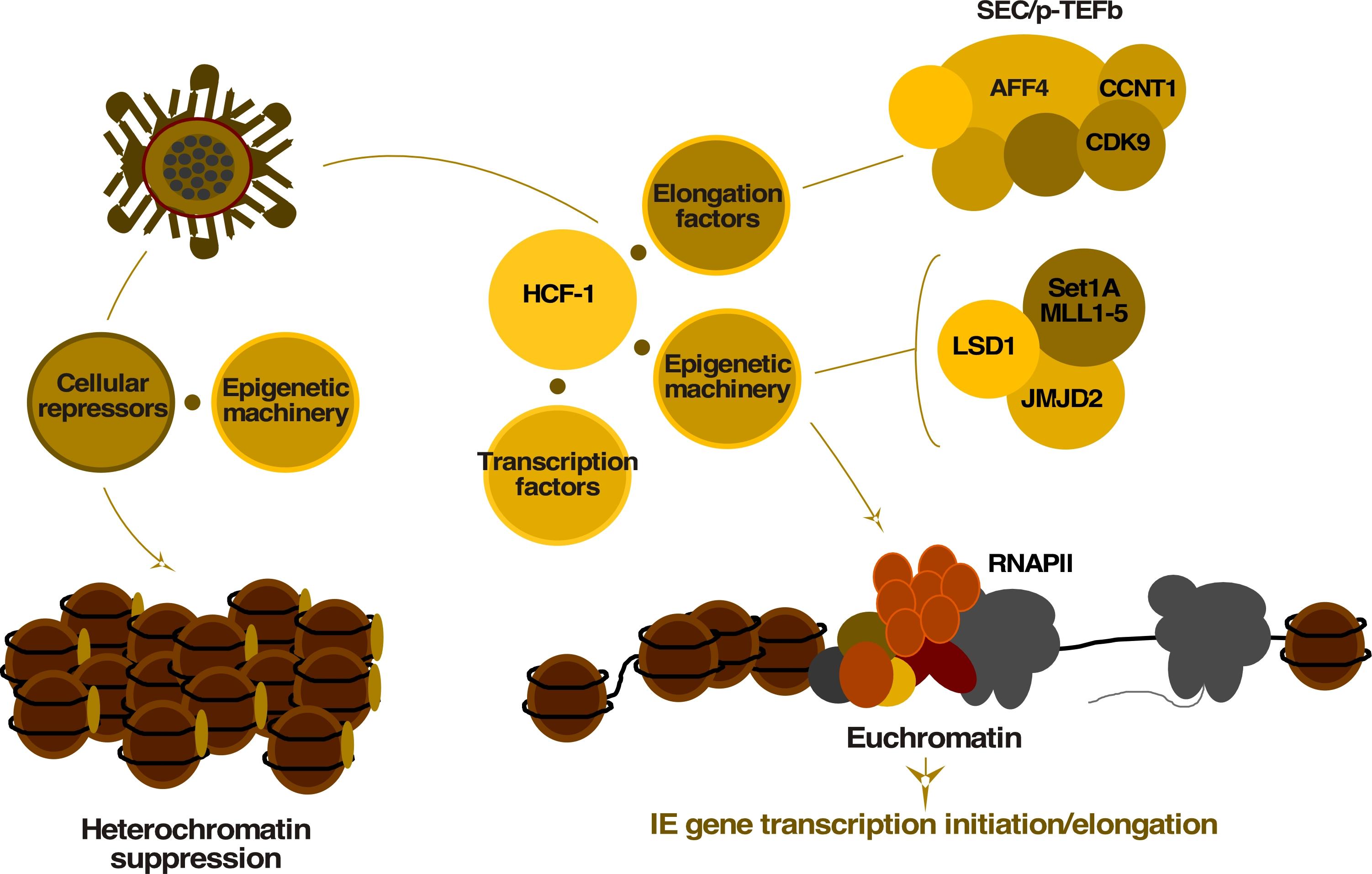Molecular Genetics Section
Thomas M. Kristie, Ph.D.
Chief, Molecular Genetics Section

Major Areas of Research
- Herpes simplex virus gene expression
- The role of transcriptional coactivators in regulation of herpesvirus lytic infection and reactivation from latency
- Chromatin control of herpesvirus lytic and latency-reaction cycles
Program Description
Herpes simplex virus (HSV) is a ubiquitous pathogen with more than two-thirds of the population infected with HSV-1 and ~500 million infected with HSV-2. The characteristic phenotype of infection is oral or genital lesions although the virus is also the primary viral-mediated cause of corneal scarification. In infected neonates, HSV can lead to developmental delays, persistent neurological issues, or mortality.
As with all herpes viruses, HSV has a dual life-cycle (Fig.1). In an initial lytic/primary infection, the virus undergoes consecutive waves of gene expression beginning with the Immediate Early (IE) genes. IE gene products are important for the expression of subsequent waves of viral gene expression whose proteins mediate viral genome replication and final assembly-packaging of progeny viruses. Following lytic infection, HSV establishes a latent pool of genomes in sensory neurons that persists for the life of the individual. In this state, the expression of lytic genes is primarily suppressed although evolving models suggest that latency is more dynamic than previously considered. Periodically, stress signaling results in induced expression of the viral Immediate Early (IE) genes and re-entry of the virus into the lytic replication cycle. Progeny virus are transported back down the neuronal axons to infect cells relatively proximal to the initial site of infection, thus producing cycles of recurrent disease.

Fig 1. The lytic-latency cycle of herpes simplex virusC, capsid; G, genome; IE, Immediate Early genes; E, Early genes; R, DNA/genome replication; L, Late genes; P, progeny virus
The main focus of the laboratory’s basic research program is the identification and investigation of components and mechanisms that control the transcription of herpes simplex virus IE genes at the initiation of viral lytic infection in primary fibroblast cells and during the initiation of reactivation from latency in sensory neurons. A number of parameters govern the initiation of lytic infection and reactivation from latency. However, the transcription of the viral Immediate Early (IE) genes represents a critical stage/junction in both processes.
The control of viral IE expression is complex with regulatory mechanisms involving multiple transcription factors, coactivators, elongation factors, and epigenetic machinery that converge to determine IE expression (Fig. 2). The coordination of these components is particularly critical during the very early stages of infection and reactivation in which a dynamic battle of activators and repressors determines the progression or suppression of infection. The laboratory employs molecular biology and biochemistry approaches to explore mechanisms involved in HSV IE gene expression in vitro and animal model systems to determine the relevance of components in vivo.
A particular emphasis has been on the roles of the cellular transcriptional coactivator HCF-1 during the initiation of lytic infection and reactivation from latency. This factor is a central essential component of the viral IE gene regulatory paradigm and, as a component of multiple protein complexes, is involved in mediating epigenetic changes to the viral genome; potentiating the activity of the many transcription factors that regulate viral IE genes; and recruitment of factors required for efficient IE gene transcriptional elongation (Fig. 2).

Fig 2. Complex regulation of HSV Immediate Early genes. LSD1, JMJD2, MLL, SETD1A, enzymes required for preventing epigenetic suppression of the viral genome; SEC-p-TEFb, Super Elongation Complex mediating transcriptional elongation of HSV IE genes. Credit: NIAID
In addition to these basic research studies, the MGS also explores the potential of targeting epigenetic machinery that modulate the epigenetic state of the viral genome as an approach to control viral infection and reactivation. Previously the MGS identified inhibitors of histone H3K9-demethylases (LSD1, JMJD2) that prevent the expression of IE genes and block both lytic infection and reactivation from latency in vitro and in vivo (Fig. 3). The laboratory continues to identify epigenetic factors that impact viral infection and leverage what is learned to investigate the use of specific epigenetic inhibitors to treat lytic infection and suppress viral reactivation in vivo.

Fig. 3 Targeting epigenetic machinery to suppress HSV infection and reactivation LSD1 and JMJD2 are required to limit the epigenetic suppression of HSV. Specific inhibitors of these enzymes prevent activation of the viral IE genes during the initiation of lytic infection and reactivation from latency (top panel). Treating animal models of HSV infection with inhibitors of LSD1 results in suppression of infection, viral shedding, and reactivation from latency in vivo (bottom panel).
Biography
Education
Ph.D., The University of Chicago, ILDr. Kristie received his Ph.D. from the Committee on Virology at the University of Chicago for his work with Dr. Bernard Roizman on the regulation of herpes simplex virus immediate early gene expression. As a postdoctoral fellow with Dr. Philip Sharp at the Center for Cancer Research, Massachusetts Institute of Technology, Dr. Kristie focused on the interaction of components involved in the formation of transcriptional enhancer complexes. Dr. Kristie joined the NIAID Laboratory of Viral Diseases in 1993, became a senior investigator in 2000, and became chief of the Molecular Genetics Section in 2001.
Memberships
- American Society for Microbiology
- American Academy of Microbiology
Advisory Boards
- Journal of Virology
- Virology
- mSystems
- Organizer, Chromatin Control of Viral Infection Workshops
- International Herpesvirus Workshop
Awards
- 2009 Norman P. Salzman Memorial Mentor Award in Virology
- 2010 NIAID Merit Award
For insights into the molecular mechanisms regulating the transcriptional program of herpesviruses that have led to the identification of new therapeutic targets
- 2012 Elected Fellow, American Academy of Microbiology
- 2015 NIAID Merit Award
For Contributions to understanding epigenetic regulation of herpes simplex virus and demonstration of epigenetic approaches to control persistent infection
- 2017 NIAID Special Act Award
For discovery of protein complexes that control infection and reactivation of herpes simplex virus and inhibitors that suppress HSV and other viruses
Selected Publications
Arbuckle JH, Gardina PJ, Gordon DN, Hickman HD, Yewdell JW, Pierson TC, Myers TG, Kristie TM. Inhibitors of the Histone Methyltransferases EZH2/1 Induce a Potent Antiviral State and Suppress Infection by Diverse Viral Pathogens. mBio. 2017 Aug 15;8(4)
Alfonso-Dunn R, Turner AW, Jean Beltran PM, Arbuckle JH, Budayeva HG, Cristea IM, Kristie TM. Transcriptional Elongation of HSV Immediate Early Genes by the Super Elongation Complex Drives Lytic Infection and Reactivation from Latency. Cell Host Microbe. 2017 Apr 12;21(4)
Hill JM, Quenelle DC, Cardin RD, Vogel JL, Clement C, Bravo FJ, Foster TP, Bosch-Marce M, Raja P, Lee JS, Bernstein DI, Krause PR, Knipe DM, Kristie TM. Inhibition of LSD1 reduces herpesvirus infection, shedding, and recurrence by promoting epigenetic suppression of viral genomes. Sci Transl Med. 2014 Dec 3;6(265).
Liang Y, Vogel JL, Arbuckle JH, Rai G, Jadhav A, Simeonov A, Maloney DJ, Kristie TM. Targeting the JMJD2 histone demethylases to epigenetically control herpesvirus infection and reactivation from latency. Sci Transl Med. 2013 Jan 9;5(167).
Liang Y, Vogel JL, Narayanan A, Peng H, Kristie TM. Inhibition of the histone demethylase LSD1 blocks alpha-herpesvirus lytic replication and reactivation from latency. Nat Med. 2009 Nov;15(11).
Research Group
Identifying components and determining mechanisms involved in transcription of herpes simplex virus (HSV) genes during the initiation of lytic infection and during viral reactivation from latency. This includes the integration of transcription factors, coactivators, epigenetic machinery, and transcription elongation factors that impact the expression of the first wave of viral genes.

